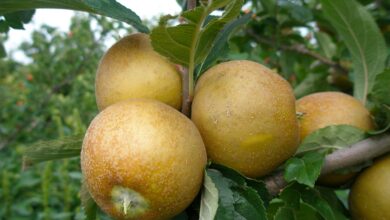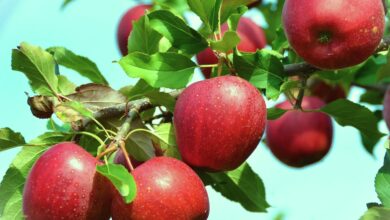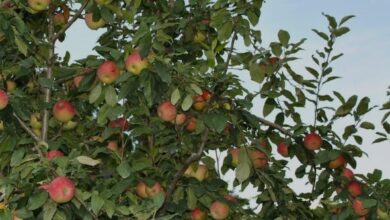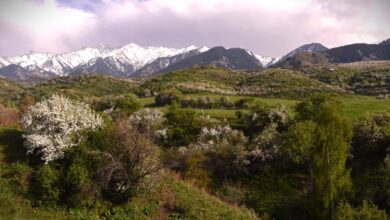What Are Tree Knots Caused By and What Are The Bumps On The Branches Of My Apple Tree?
What Causes Knobby Apples and Are Burr Knots Bad For Apple Trees?
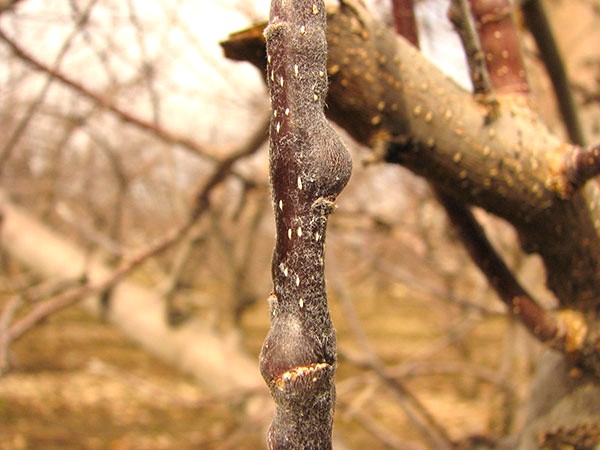
The ancient, twisted trees that surrounded the apple orchard where I grew up were striking, resembling large, arthritic old ladies rooted to the earth. Since then, I’ve learned that there are a few reasons why apple trees develop knobby growths. To find out more about the growth of apple trees, keep reading. So are burr knots bad for apple trees?
The Burr Knots Of Apple Trees
Certain apple trees, especially early “June” cultivars, are particularly prone to burr knots. Clusters of twisted or knobby growths on apple tree branches that are three years of age or older are called burr knots, or burrknots. Dwarf rootstocks are more likely to experience this. If you want to start a new tree, just cut the damaged branch off of the mother and plant it. The outgrowths can produce both shoots and roots.
Burr knots on apple trees have the drawback of potentially serving as a point of entry for pests and disease. Additionally, if the wind gets strong, a tree with a lot of burr knots and a high apple yield may weaken and break.
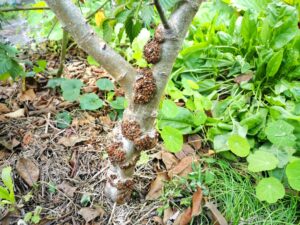
As mentioned earlier, certain cultivars are more vulnerable than others, and burr knots may develop more readily in environments with low light, high humidity, and temperatures between 68 and 96 degrees Fahrenheit (20 and 35 degrees Celsius). Additionally, there is proof that infestations of wooly aphids result in wounds that eventually cause knots to form. Burrknot borers might be the reason as well. Select rootstock with a lower burr production rate. Gallex can also be applied to the knots to aid in the healing and development of calluses. Burr knots can weaken a tree, making it susceptible to infection or infestation, which will ultimately kill it. If the tree is badly affected, you may want to remove it completely.
Apple Tree Gall
A gnarly prominence on apple tree limbs can also be caused by crown galls. Although it can also affect the branches of many other shrubs and trees, apple tree crown gall mainly affects the roots and trunks, causing tumor-like galls to form there. Galls obstruct the tree’s water and nutrient flow. It is common for young seedlings to die if they have several galls or if one gall covers the whole girth of the tree. Trees that are older are less vulnerable.
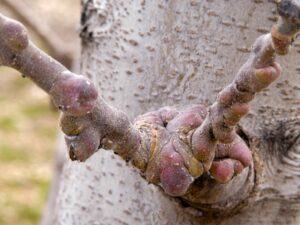
‘Gall’ is defined by Webster’s as “a skin sore caused by chronic irritation.” That’s precisely what’s happening to the “skin” of the tree. Agrobacterium tumefaciens, a bacterium present in over 600 plant species globally, has infected it. Bacteria that enter the root system through physical wounds such as excavation, grafting, planting, soil insects, or other injuries result in galls on the limbs of apple trees.
The bacteria enters after detecting the chemicals released by the injured roots. Gall formation is the result of the bacteria’s invasion, which causes the cells to produce too many plant hormones. In other words, like cancer cells, infected cells grow to abnormally large sizes and multiply exponentially. In addition to being able to persist in the soil for many years and potentially infect subsequent plantings, the infection can be transferred to other vulnerable plants through contaminated pruning tools.
Gall On Apple Tree Branches
Additionally, the bacteria are often spread to new areas on the roots of transplanted infected plants. As these galls break down, the bacteria are released back into the soil and spread by machinery or water flow. Preventing apple tree gall is the only effective way to manage it. It is challenging to eradicate the bacterium once it has been established. Be cautious when selecting new plants and keep an eye out for any indications of damage or infection. Do not put a young tree with gall in the compost pile; instead, dig it up and the surrounding soil and dispose of it. Set the diseased tree on fire. More established trees can typically withstand the infection and be ignored. Don’t add susceptible plants like willow, poplar, fruit trees, or roses if gall has been found in the landscape. Pruning tools should always be sterilized to avoid cross-contamination.
Lastly, prior to transplanting, trees can be shielded from apple crown gall. Soak the roots in a mixture of water and Agrobacterium radiobacter K84, a biological control bacterium. This bacterium creates a natural antibiotic that remains in wounds and stops the growth of A. tumefaciens.

